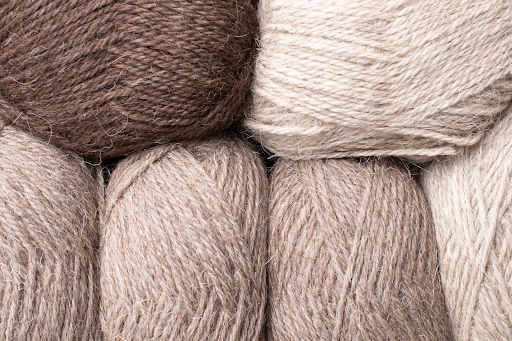Weaving is one of the oldest crafts that transforms a simple strand of yarn into an intricate work of art. Wool is considered the best option for weaving, as it offers elegance and durability. Whether you’re crafting something for your own home, creating wearable art, or making a piece meant to last for generations, wool earns its place on the loom.
In this article, we will discuss why wool fiber is a top choice for weaving and why it is hard to replace.
Durability and strength
When you invest time and energy into weaving, you expect the finished fabric to last for years. The wool fiber is built with a complex structure of keratin proteins and overlapping scales, which makes it resistant to breaking and fraying.
This strength means your woven items, like clothing, throws, or rugs, withstand daily wear and tear. Some antique woven wool pieces have lasted for generations with only minimal wear.
Elasticity and resilience
Another major advantage of wool fiber is its ability to stretch and bounce back. With natural crimp property, it can be stretched and return to its original shape. This means it can withstand being bent without losing its shape.
Wool’s resilience keeps it looking neat and well-fitted. This quality also improves comfort in wearable woven items, letting them move naturally without losing their original fit.
Moisture-wicking
The wool fibers can absorb moisture vapor. The fabric draws moisture away from your skin and allows it to evaporate gradually. Even in home textiles, this moisture management helps prevent musty odors and keeps the fabric feeling fresh.
Texture and aesthetics
The wool offers a variety of options for weaving, from smooth and silky merino to rustic and textured fibers. The wool can also be dyed. The colors add dimension and vibrancy to woven patterns. Moreover, the wool’s natural luster contributes to improved aesthetics.
Fire resistance
Wool can naturally resist ignition and self-extinguish when the heat source is removed. This means it poses less risk of severe burns or injury as compared to synthetics. Moreover, it produces less smoke and toxic gases, which helps to enhance safety in a fire situation. This makes wool a safer choice for woven items used in the home, such as curtains, wall hangings, or upholstery.
Sustainability
With growing awareness of environmental impact, more weavers are turning to natural and renewable fibers. The wool fiber is a sustainable option, as it is a renewable resource. Sheep produce a new fleece every year. It is also biodegradable, as it breaks down naturally when it reaches the end of its life cycle. Additionally, wool’s durability helps to reduce waste.
Versatility
If you love exploring different weaving techniques, wool is the best fiber. It can be spun fine for lightweight fabrics or left chunky for thick and cozy textures. It also blends easily with other fibers, like adding silk for sheen or alpaca for an even softer feel.
Wools can be used to make flat-weave rugs and intricate patterned scarves. This means you can use it for practical household items, wearable fashion, or purely decorative pieces.




